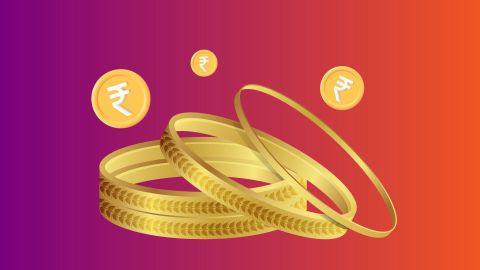In 2023, gold prices have exhibited notable stability amidst global economic uncertainties. The year has seen gold maintaining its appeal as a safe-haven asset, driven by persistent inflationary pressures and geopolitical tensions. Economic recovery post-pandemic has been gradual, and central banks' monetary policies have played a critical role in shaping gold price trends. Interest rates, inflation expectations, and the strength of the US dollar have been key determinants. Overall, gold has managed to sustain a strong position, reflecting continued investor confidence in its long-term value.
When is the right time to buy gold in India
Determining the right time to buy gold in India involves analysing various factors. Typically, gold prices tend to be lower during times of economic stability and higher during periods of uncertainty. Festive seasons like Diwali and Akshaya Tritiya see increased demand and potentially higher prices. Conversely, buying during off-peak periods might offer better prices. Monitoring global economic indicators, currency fluctuations, and local demand trends can also provide insights. Ultimately, the best time to buy gold is when prices are relatively stable, and economic conditions are favourable.
Understanding the impact of 2023 gold price trends on gold loans
In 2023, gold price trends have had significant implications for gold loans. Higher gold prices increase the value of the collateral, allowing borrowers to secure larger loan amounts. However, lenders may adjust interest rates and loan-to-value ratios to manage risks associated with fluctuating gold prices. Borrowers benefit from higher gold valuations but must be mindful of potential market volatility. Understanding these trends helps in making informed decisions regarding gold loans, ensuring borrowers maximise the benefits of their collateral.
Economic factors
- Inflation: Higher inflation increases gold's appeal as a hedge.
- Interest rates: Lower interest rates reduce the opportunity cost of holding gold.
- Currency strength: A weaker domestic currency can increase gold prices.
- Economic growth: Slow growth boosts gold's attractiveness as a safe haven.
Geopolitical events
- Political instability: Increases demand for gold as a safe asset.
- Trade wars: Can drive up gold prices due to economic uncertainty.
- Conflict zones: Heighten gold's appeal for wealth preservation.
- Sanctions: Impact global trade and influence gold demand.
Market demand and supply
- Jewellery demand: High demand during festivals can raise prices.
- Technology demand: Increased use in electronics impacts prices.
- Mining production: Lower output can reduce supply and increase prices.
- Recycling rates: High recycling rates can boost supply, stabilising prices.
Tips for taking a gold loan during high gold prices
Taking a gold loan during periods of high gold prices can be advantageous if managed wisely. Firstly, compare offers from multiple lenders to find the best interest rates and terms. Ensure you understand the loan-to-value ratio and how much you can borrow against your gold. Be mindful of repayment terms and plan accordingly to avoid financial strain. Consider the potential for future gold price fluctuations and choose flexible repayment options if available. Lastly, use the loan for productive purposes to ensure it adds value to your financial portfolio.





